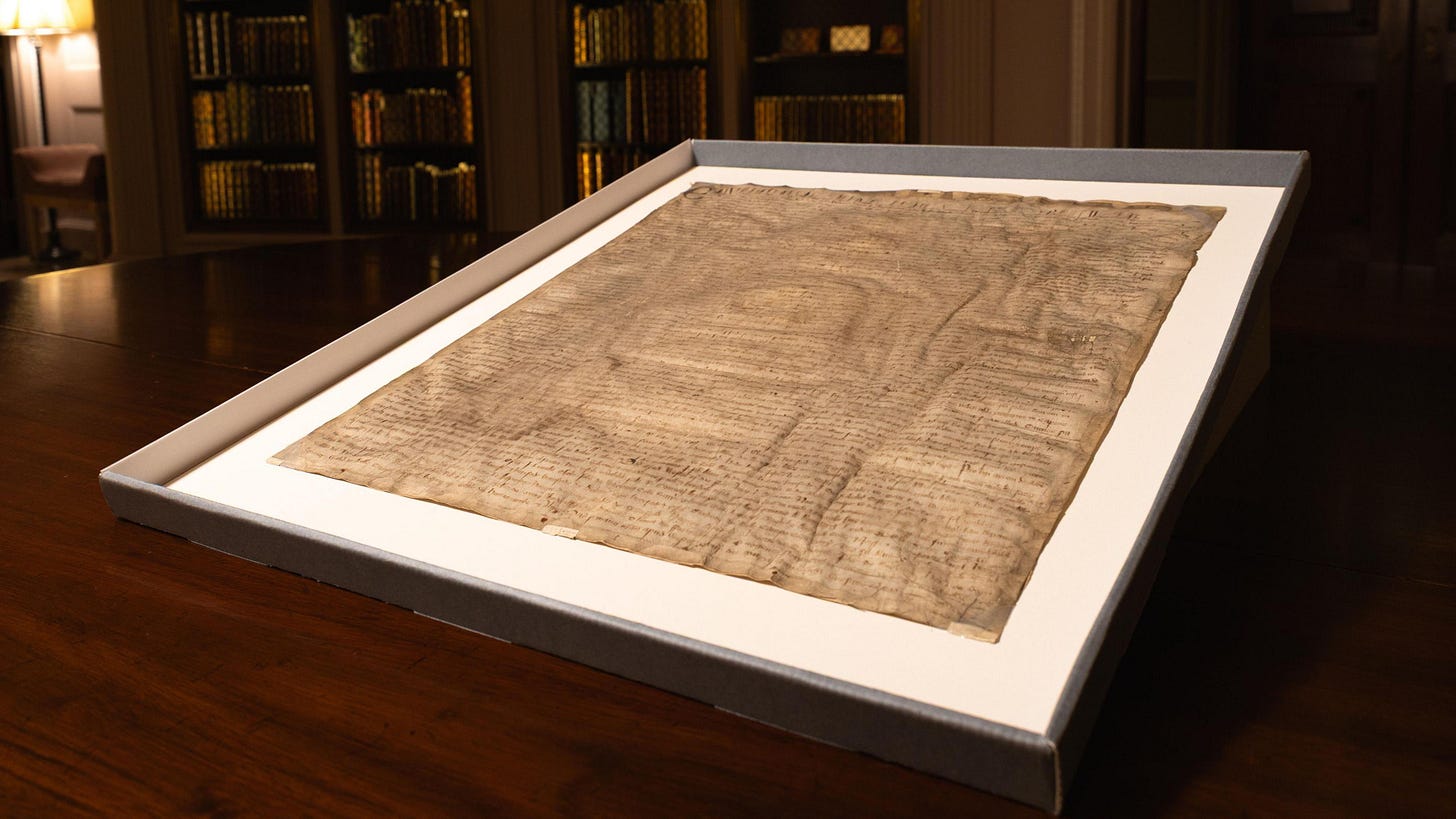This is the sort of thing I like waking up to hear.
Harvard library has been sitting on an official copy of Magna Carta since the 1940s without realising it.
The manuscript was bought for less than thirty bucks (then about £7) in 1946, on the basis that it was a private copy of the great charter made in the 1320s.
But according to Professors David Carpenter and Nicholas Vincent, who have been studying the manuscript, this is in fact a 1300 copy - a confirmation of the original charter that was made by Edward I.
Since every reputable news outlet is reporting the story, I thought I’d answer a few questions you might have about what this all means.
Post any more in the comments below and I’ll answer them later. Am on the way now to the studio to record some podcast episodes.
First of all, is this real or what?
Yes, this is a genuinely important discovery, assuming you are interested in medieval English history, which I’m guessing, since you’re here, you are.
Harvard Library bought what they thought was an interesting but trivial fourteenth century manuscript in 1946 for a small sum. They knew it was a copy of Magna Carta, but thought it was grubby and not worth much to scholars. Now it seems this was in fact an official copy of the charter, which means it is of very much more consequence.
Think about it like this. In 2017 the painting Salvator Mundi, long thought to be a copy of a Leonardo da Vinci painting destroyed in the 1600s, was reassessed as being by Leonardo himself. Its value at auction shot up from a few thousand pounds to hundreds of millions.
This is somewhat the charter equivalent.
What is the difference between a copy of Magna Carta and… a copy of Magna Carta?
Keep reading with a 7-day free trial
Subscribe to History, Etc to keep reading this post and get 7 days of free access to the full post archives.




